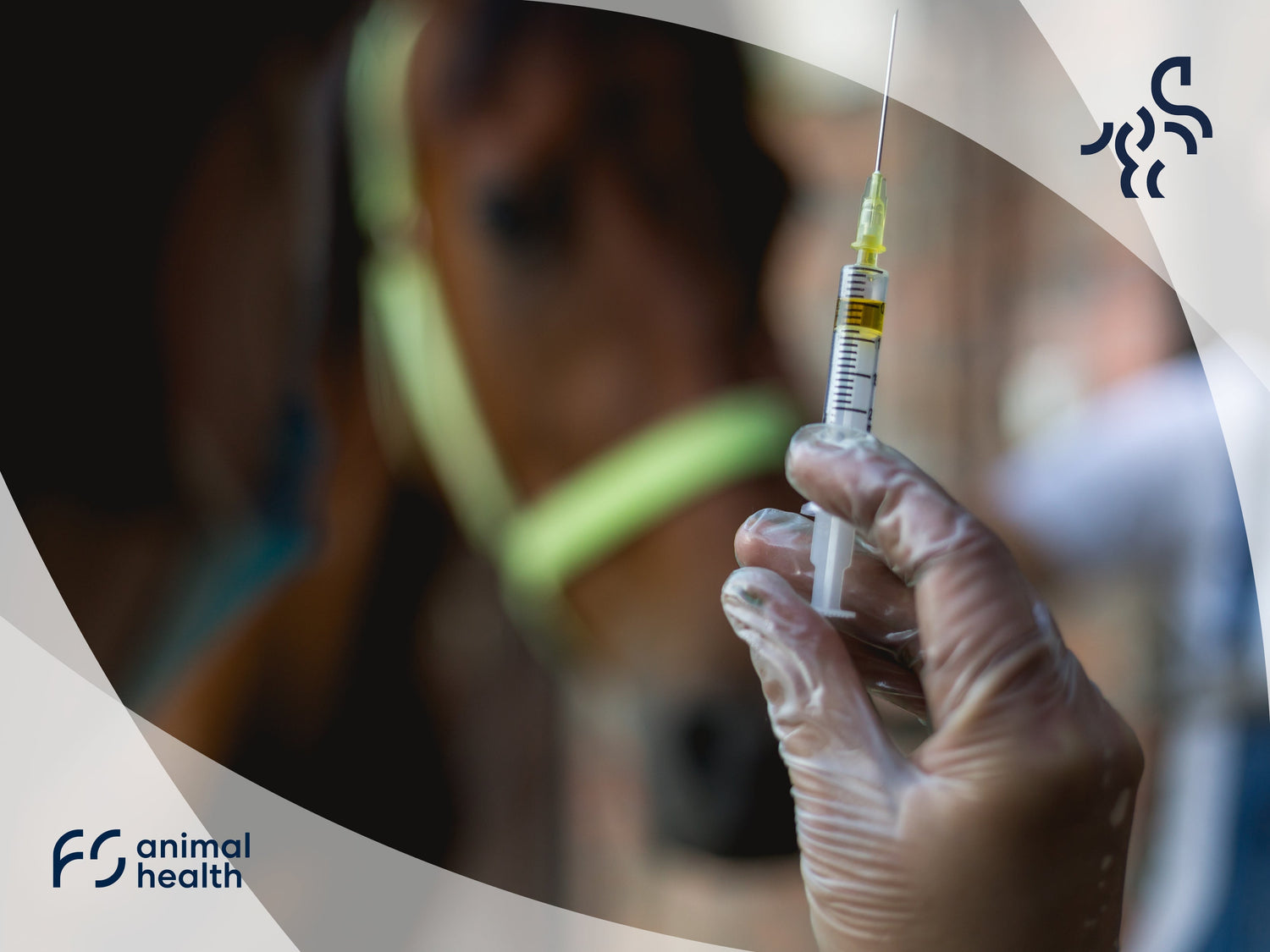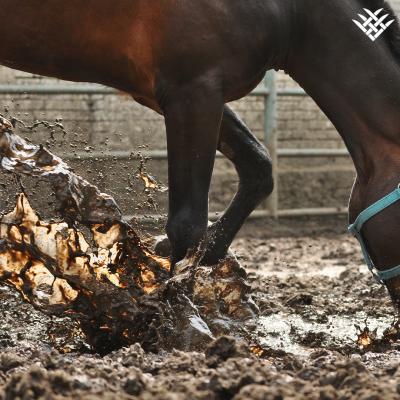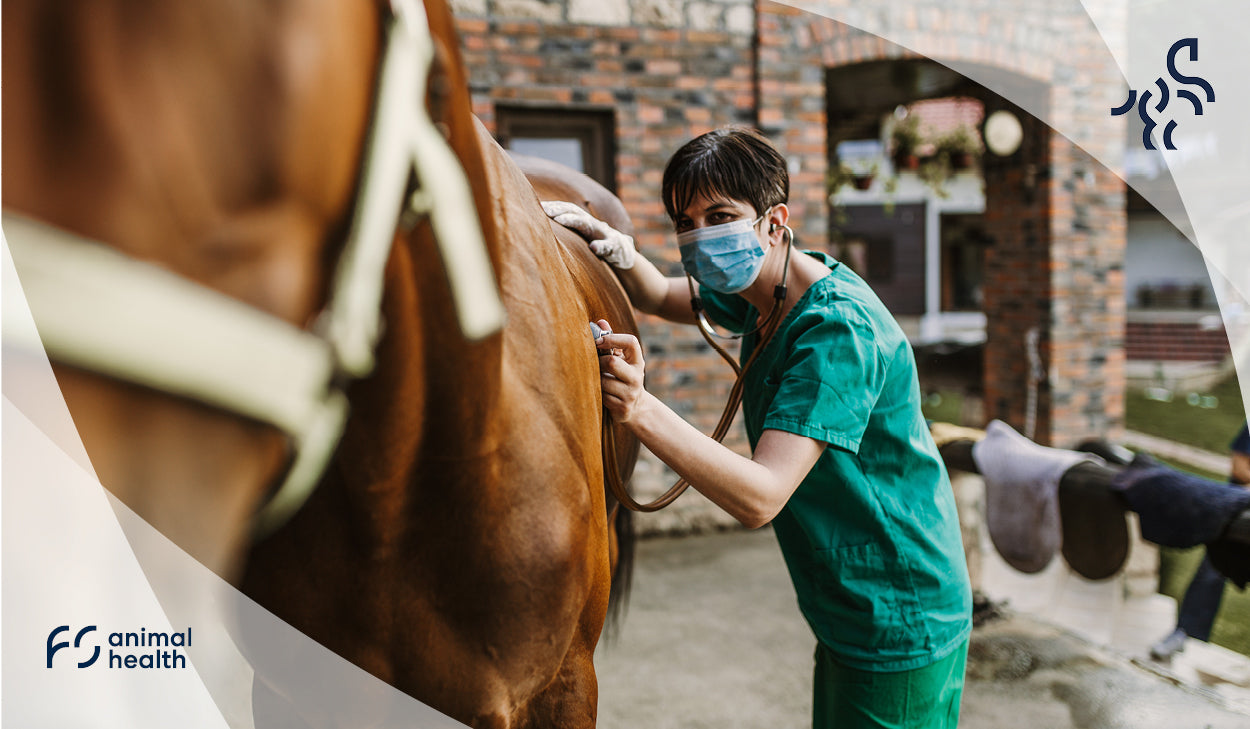Box rest is a common treatment for horses that require time to recover from an injury or illness. The primary goal of box rest is to limit the horse's movement to allow for proper healing. This minimises the stress on the injured area, allowing for tissue repair, while reducing the risk of re-injury.
It also offers other benefits including the facilitation of better monitoring, preventing complications, and enabling supervised rehabilitation. In a controlled environment where the horse's movement is limited, the body can focus on healing the injured tissues. Furthermore, the confined space reduces the likelihood of the horse encountering hazards that could hinder the healing process or lead to re-injury.
If your horse needs box rest following an injury or surgery, here are some steps you can take to ensure your horse is properly cared for during their box rest period:
- Choose a suitable stable: If you are on a busy yard, try and opt for the stable that is in the quieter corner. Horses may feel more restless if there is high footfall past their stable. Make sure the stable is clean, dry, and well-ventilated. It is also a good idea to provide generous bedding to keep the horse comfortable.
- Monitor your horse closely: Check on your horse frequently throughout the day to ensure they are comfortable and not in distress. Look out for signs of stress, such as sweating, pacing, or kicking.
- Provide enough food and water: Your horse’s eating pattern may change while being kept in. It is important to make sure they are eating enough but also that they are not eating all their food too quickly. Ensure your horse always has access to fresh water and provide hay or other forage to keep them occupied.
- Keep your horse entertained: Horses can easily become bored during box rest, which can lead to stress and anxiety. Provide your horse with toys or other forms of entertainment to keep them occupied.
Remember to keep a close eye on your horse throughout their box rest period and contact your vet if you notice any signs of distress or worsening of their condition.
For horses that struggle with box rest
It is important to consider, that even with the best-intended plan, not all horses are going to take kindly to box rest. Despite it being in their best interest, horses can dislike box rest due to the impact it has on their natural instincts, social nature, and their daily routines. Some factors to consider with box rest include:
- Social nature: Horses are herd animals, and they have a strong social bond with other horses. Box rest often isolates them from their companions, this can lead to feelings of loneliness and separation anxiety.
- Restricted movement: Horses are built for movement, and confinement in a stable restricts their natural ability to roam, graze, and explore. The lack of movement during box rest can be frustrating and unnatural for the horse, leading to restlessness and undesirable behaviours such as weaving, pawing, or cribbing.
- Limited grazing: Grazing is an essential part of a horse's natural behaviour and diet. During box rest, access to fresh grass is usually restricted or absent altogether.
- Change in routine: Horses are creatures of habit and thrive on a consistent daily routine. The sudden change from an active lifestyle to confinement in a stable can be unsettling and confusing for the horse.
- Separation from the environment: Horses are also naturally attuned to their environment. They may miss the sensory experiences of being outdoors, such as feeling the wind, sun, or rain on their skin.
So how do you solve these issues while keeping your horse in a safe and secure environment?
The Duracorral Turnout Pen may be the perfect alternative to box rest. It can also be used in conjunction with box rest to provide a much richer and more enjoyable recovery period.
The Duracorral Turnout Pen solves all of the issues mentioned above. Let’s explore how….
- Social Nature: The Duracorral can be set up in the field where your horse can see others, reducing the risk of separation anxiety.
- Restricted Movement: While it is still important to limit movement during rehabilitation, Duracorral panels can be added or subtracted to make the desired size to allow for an adequate amount of movement relative to the stage of recovery.
- Limited Grazing: The Duraccoral allows your horse to graze on fresh grass while being kept in a safe and secure place. The corral can be moved to fresh grass as often as needed.
- Change in Routine: Leading your horse out into the field where the Duracorral is set up, and then bringing them back into the stable at night can help simulate a very typical routine.
- Separation from the Environment: The Duracorral allows your horse the enjoyment and mental stimulation of being outdoors.
Our Duracorral panels are carefully crafted using rotationally moulded plastic to ensure uniform strength and integrity throughout the entire panel. The plastic material is UV stabilized and frost resistant, guaranteeing its resilience against brittleness, melting, rot, or rust, hence earning its name for durability.
The panels boast a substantial thickness and robustness, ideal for securing horses, as well as large farm animals. Remarkably, they remain lightweight, facilitating easy mobility and setup by a single person. The absence of sharp metal edges or corners makes the pen incredibly safe for all horses.
Measuring 3.2m in length and 1.6m in height, each panel can be customised to create pens, lunge rings, or serve as an outdoor alternative for box rest. With their sufficient height, horses are securely contained. They also help curb undesirable behaviour such as cribbing and weaving as the panels are tall and too thick to bite.
These turnout pens are available as a set of 8 (diameter of approx 30 feet) or a set of 15 (diameter of approx 50 feet). The panels are also available to purchase individually to make a limitless possibility of configurations.



